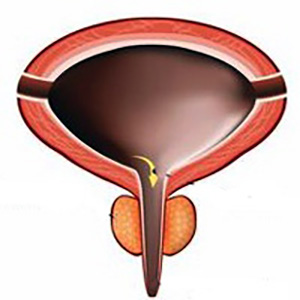Are voiding volumes and frequencies different in the three-day voiding diary in children with lower urinary tract dysfunction?

Accepted: September 2, 2023
All claims expressed in this article are solely those of the authors and do not necessarily represent those of their affiliated organizations, or those of the publisher, the editors and the reviewers. Any product that may be evaluated in this article or claim that may be made by its manufacturer is not guaranteed or endorsed by the publisher.
Aim: The voiding diary (VD) yields crucial insights into voiding volumes (VV), voiding frequency (VF), and management habits in children with lower urinary tract (LUT) dysfunction. It is recommended to be conducted for a minimum of 2 days. Nevertheless, certain studies have indicated similarities in voided volumes between days in a three-day VD. This study aims to compare VV and VF values across days based on bladder capacity and symptom scores. Materials and Methods: Children who applied to the pediatric urology clinic due to LUT symptoms between 2022 and 2023 were included in the study. Retrospective evaluation was conducted on the records. Children with neurological deficits and incomplete data were excluded from the study. All children were assessed following the guidelines of ICCS and EUA and underwent a 3-day voiding diary. Mean VV and VF values of the whole group for each day were compared and subgroup analyzes were performed in terms of gender, Voiding Dysfunction Symptom Score (VDSS), bladder capacity (BC), and diagnoses. Results: A total of 109 (53 girls (48.6%), 56 boys (51.4%)) children with a median age of 8 (3-17) were included in the study. 77 (70.6%) children were diagnosed with overactive bladder, 8 (7.4%) with dysfunctional voiding, and 24 (22%) with monosymptomatic enuresis nocturne. The mean VVs between days were similar in the whole group (p = 0.759). Moreover, the mean VV of the first day was similar to the average of both the first two days and the three days (p = 0.021, p = 0.490). Also, the maximum and minimum VVs were similar between days (p = 0.942, p = 0.160, respectively). In subgroup analyses based on gender, bladder capacity, and symptom score, mean VV was also found to be similar. VF values were found to be significantly different between days. There was also a difference between VF values in children with VDSS > 8.5 (p = 0.012) and BC/EBC (%) > 65 (p = 0.030). In subgroup analysis for diagnoses, mean and maximum VV and VF were similar between the groups, except for VF (p = 0.026) in OAB. Conclusion: While the voided volumes of children with non-neurogenic LUT dysfunctions appear to be consistent across the days of the VD, variations in VF might arise, especially among children with a VDSS of > 8.5 and normal bladder capacity. As a result, we believe that using a VD spanning at least two days could enhance diagnostic accuracy and help prevent unnecessary treatment.
Austin PF, Bauer SB, Bower W, Chase J, Franco I, Hoebeke P, et al. The standardization of terminology of lower urinary tract function in children and adolescents: Update report from the standardization committee of the International Children's Continence Society. Neurourol Urodyn. 2016;35(4):471-81. DOI: https://doi.org/10.1002/nau.22751
Bauer SB, Nijman RJ, Drzewiecki BA, Sillen U, Hoebeke P. International Children's Continence Society standardization report on urodynamic studies of the lower urinary tract in children. Neurourol Urodyn. 2015;34(7):640-7. DOI: https://doi.org/10.1002/nau.22783
C R, G B, B B, HS D, JM N, J Q, et al. Day-time lower urinary tract conditions. EAU Guidelines On Paediatric Urology. 2022.
Lopes I, Veiga ML, Braga AA, Brasil CA, Hoffmann A, Barroso U, Jr. A two-day bladder diary for children: Is it enough? J Pediatr Urol. 2015;11(6):348.e1-4. DOI: https://doi.org/10.1016/j.jpurol.2015.04.032
Franck HHM, Guedes ACS, Alvim YFS, de Andrade TMS, Oliveira LF, da Silva LI, et al. One-day voiding diary in the evaluation of Lower Urinary Tract Symptoms in children. Int Braz J Urol. 2023;49(1):89-96. DOI: https://doi.org/10.1590/s1677-5538.ibju.2022.0375
Akbal C, Genc Y, Burgu B, Ozden E, Tekgul S. Dysfunctional voiding and incontinence scoring system: quantitative evaluation of incontinence symptoms in pediatric population. J Urol. 2005;173(3):969-73. DOI: https://doi.org/10.1097/01.ju.0000152183.91888.f6
Koff SA. Estimating bladder capacity in children. Urology. 1983;21(3):248. DOI: https://doi.org/10.1016/0090-4295(83)90079-1
Nevéus T, von Gontard A, Hoebeke P, Hjälmås K, Bauer S, Bower W, et al. The standardization of terminology of lower urinary tract function in children and adolescents: report from the Standardisation Committee of the International Children's Continence Society. J Urol. 2006;176(1):314-24. DOI: https://doi.org/10.1016/S0022-5347(06)00305-3
Elmer C, Murphy A, Elliott JO, Book NM. Twenty-Four-Hour Voiding Diaries Versus 3-Day Voiding Diaries: A Clinical Comparison. Female Pelvic Med Reconstr Surg. 2017;23(6):429-32. DOI: https://doi.org/10.1097/SPV.0000000000000412
Cameron AP, Wiseman JB, Smith AR, Merion RM, Gillespie BW, Bradley CS, et al. Are three-day voiding diaries feasible and reliable? Results from the Symptoms of Lower Urinary Tract Dysfunction Research Network (LURN) cohort. Neurourol Urodyn. 2019;38(8):2185-93. DOI: https://doi.org/10.1002/nau.24113
Copyright (c) 2023 the Author(s)

This work is licensed under a Creative Commons Attribution-NonCommercial 4.0 International License.
PAGEPress has chosen to apply the Creative Commons Attribution NonCommercial 4.0 International License (CC BY-NC 4.0) to all manuscripts to be published.


 https://doi.org/10.4081/aiua.2023.11662
https://doi.org/10.4081/aiua.2023.11662



